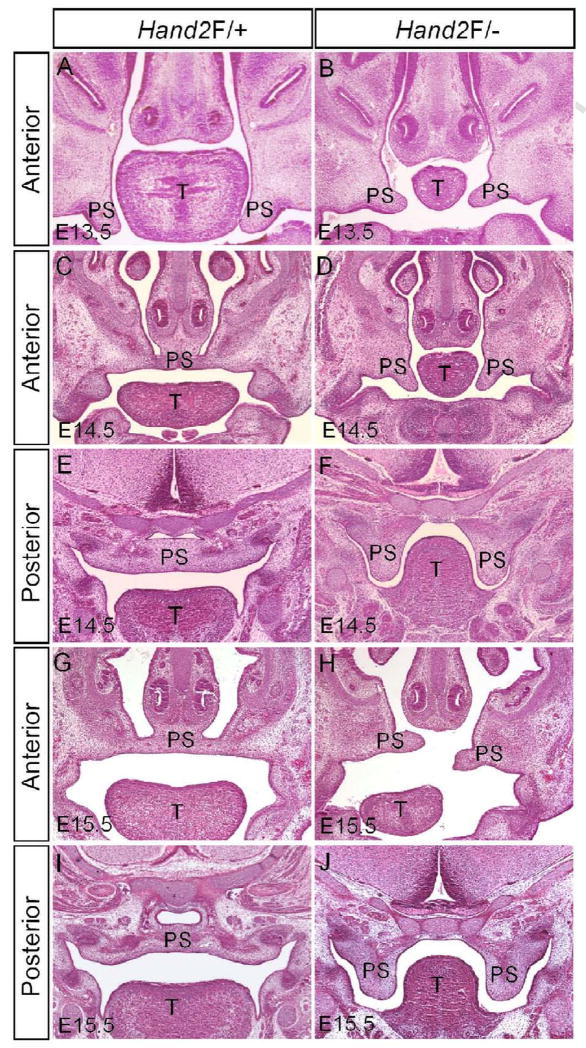Figure 1.
Hand2LoxP/− mice exhibit hindrance of palate shelf elevation. (A) A section of an E13.5 wild type embryo shows normal developing palatal shelves. (B) The palatal shelves of an E13.5 Hand2LoxP/− embryo appear relatively small. (C–F) At E14.5, palatal shelves in the wild type control have already elevated to the position above the tongue and fused at the midline (C, E). However, in Hand2LoxP/− mice, the palatal shelves remain in a vertical position (D, F). (G–J) Wild type controls at E15.5 are shown in (G) and (I). In the mutant, the anterior portion of the palatal shelves elevates to the horizontal position above the tongue, but exhibits a misalignment (H), while the posterior portion remains in the vertical position (J). T, tongue; PS, palatal shelf.

